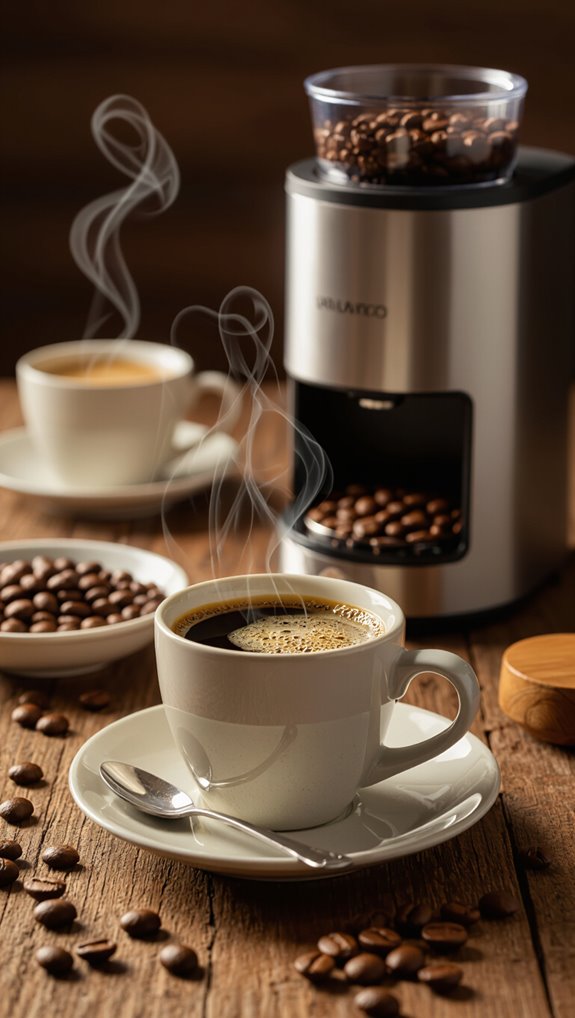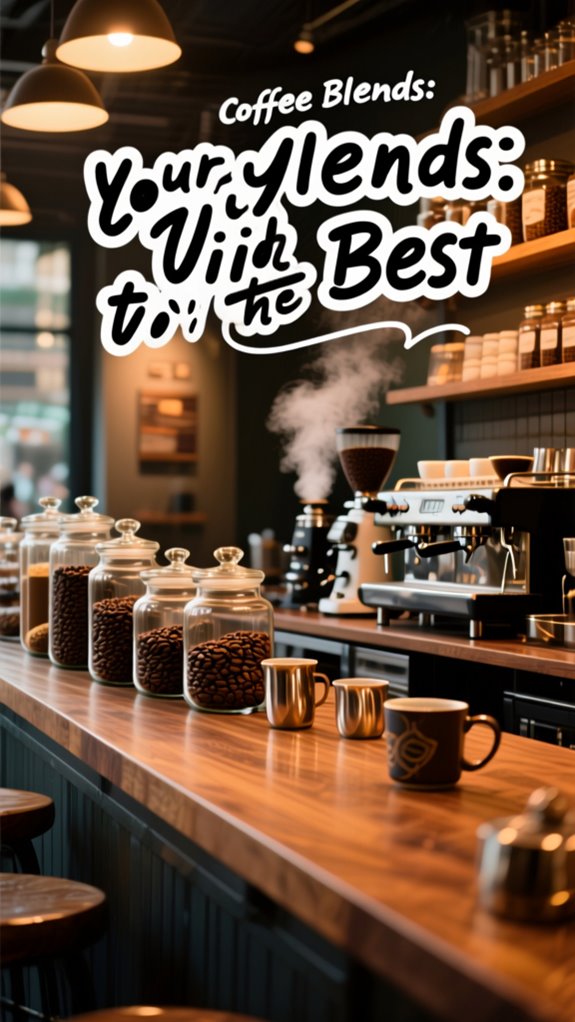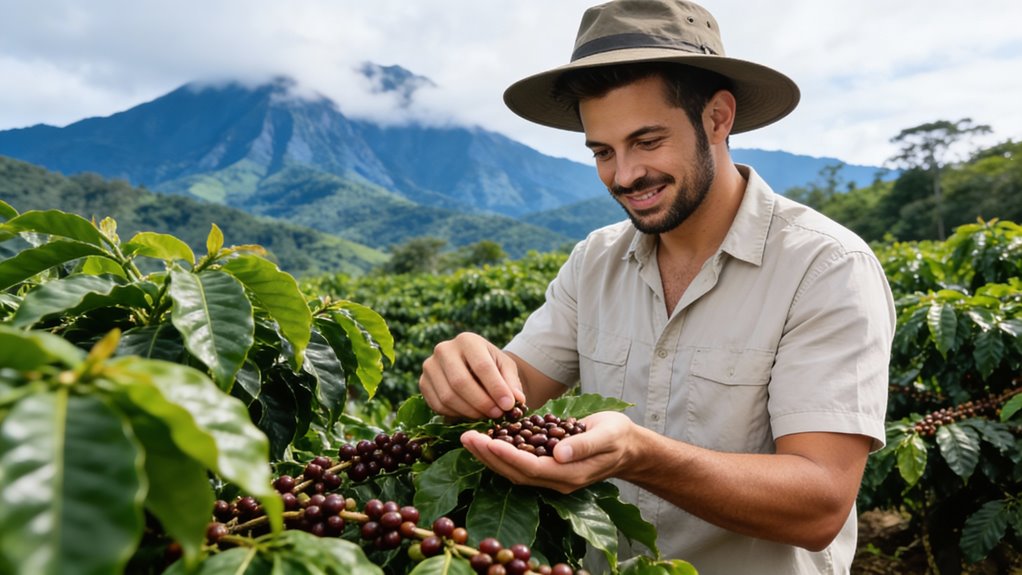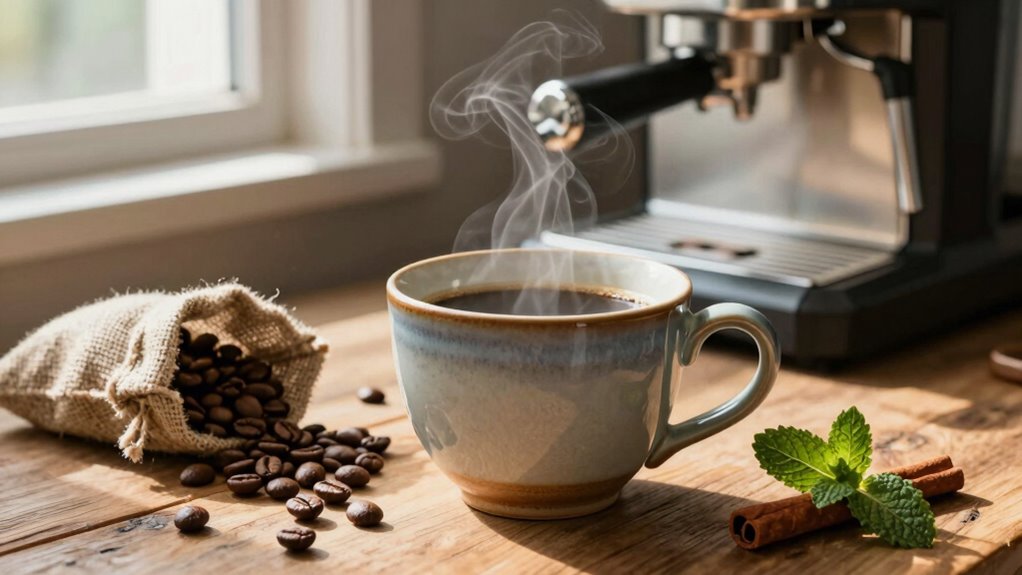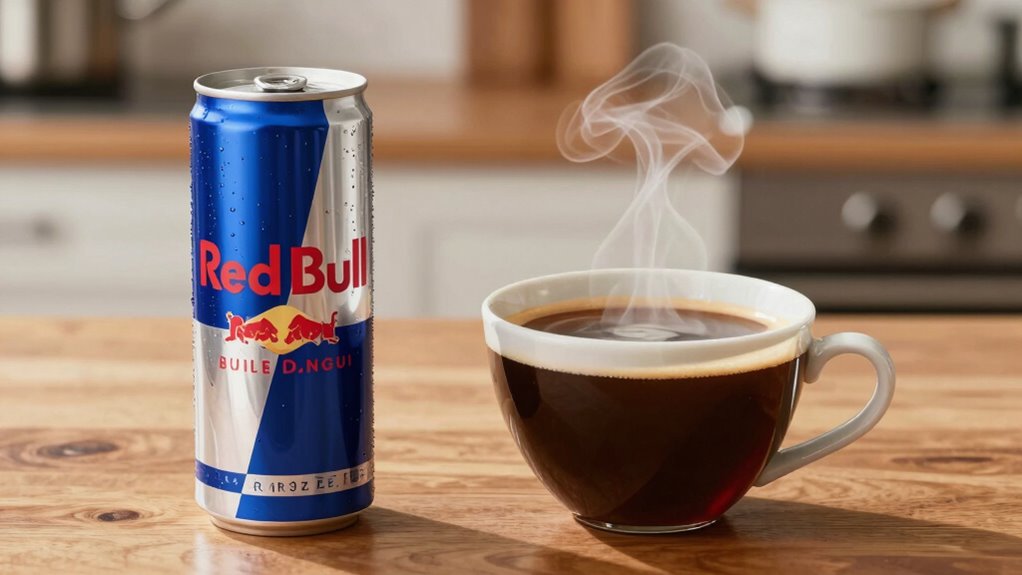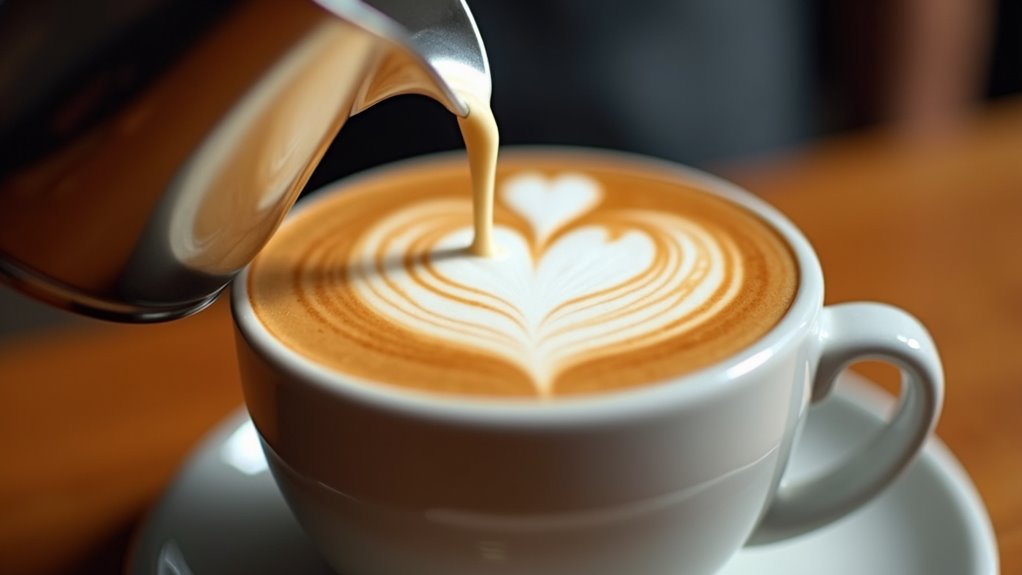Ever stared at a coffee shop menu or grocery store shelf, overwhelmed by the sheer number of blend options? You’re not alone. Most coffee drinkers struggle to understand what makes one blend different from another, or worse, they settle for whatever’s on sale without knowing if it matches their taste preferences.
Coffee blends are more than just a mix of beans from different regions—they’re carefully crafted combinations designed to create consistent, balanced flavors that single-origin coffees can’t always deliver. The right blend can give you the perfect morning cup, elevate your espresso shots, or match your preferred brewing method.
In this guide, you’ll discover how coffee blends are created, what to look for when choosing one, and how different blend types affect your cup’s flavor. Whether you’re new to specialty coffee or looking to refine your palate, you’ll learn exactly how to select blends that match your taste and brewing style.
Table of Contents
What Are Coffee Blends and Why They Matter
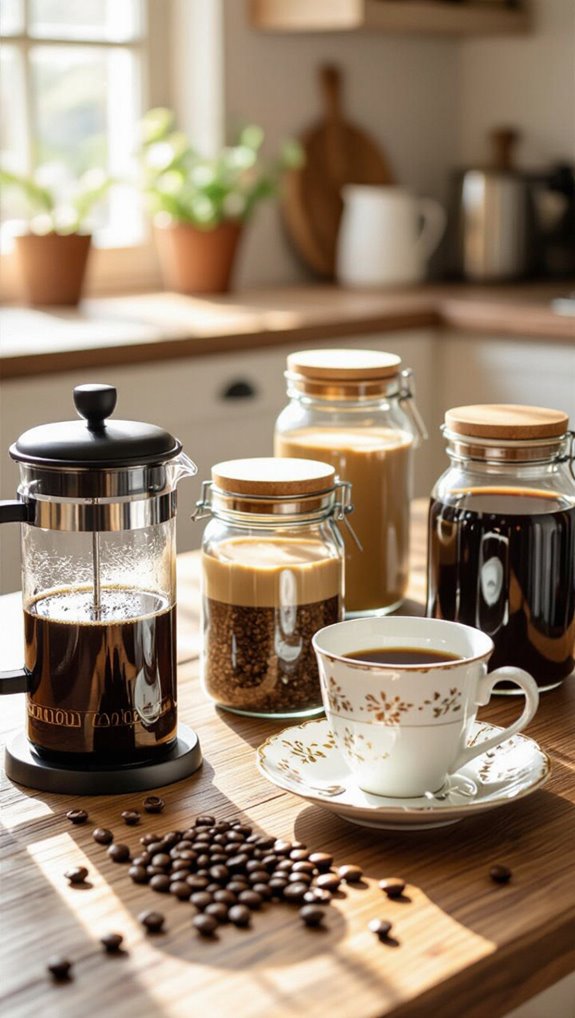
While coffee might seem simple at first glance, the world of coffee blends is a fascinating art that transforms ordinary beans into extraordinary experiences. A coffee blend combines beans from multiple origins to create a balanced, consistent flavor profile that delights coffee lovers. Historically, roasters used blending techniques to strategically address flavor deficiencies in single-origin coffees.
Roasters carefully select beans with complementary characteristics—like Brazilian nutty notes and Colombian bright acidity—to craft a harmonious taste.
The magic of blending lies in its ability to:
- Enhance overall flavor complexity
- Ensure consistent taste across seasons
- Satisfy diverse consumer preferences
This strategic mixing turns individual beans into something truly special.
Popular Types of Coffee Blends You Should Try
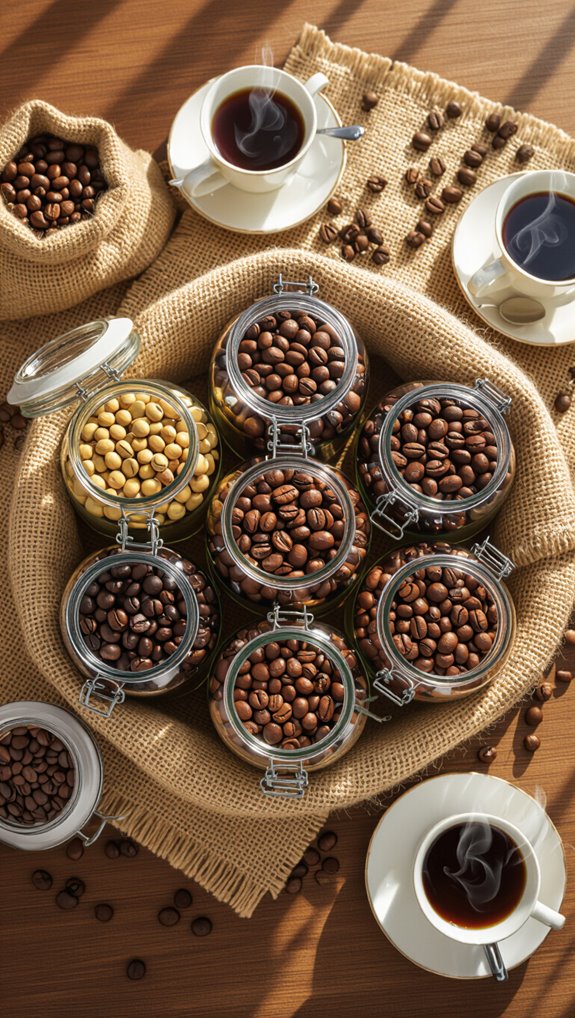
Because coffee blends offer a world of flavor waiting to be explored, I’m excited to guide you through the most delightful and distinctive coffee experiences you can savor.
From mellow Breakfast Blends with soft chocolate notes to bright Horizon Blends bursting with fruity zest, there’s a perfect brew for every palate.
Adventurous coffee lovers will appreciate full-bodied Meridian Blends and intense French Roast options.
Seasonal selections like Cherry Blossom and Holiday Blends provide unique, limited-time taste experiences that’ll transform your daily coffee ritual into a delicious journey of discovery.
Coffee blends artfully combine beans from diverse global coffee origins to create complex, balanced flavor profiles that surprise and delight the senses.
Coffee Blends vs Single Origin: Which Tastes Better

How do coffee blends and single origin coffees stack up in the taste department? The winner depends on your palate preferences. Single origins deliver a more nuanced, complex flavor experience, highlighting unique regional characteristics. Blends offer a balanced, consistent taste perfect for daily drinking. Consider these taste factors:
- Single origins showcase vibrant, distinct flavor notes
- Blends provide predictable, smooth drinking experience
- Regional coffees capture terroir’s unique essence
- Crafted blends balance multiple bean profiles
Traceability in coffee production enables consumers to understand the precise journey and impact of their chosen beans, adding depth to the tasting experience. While single origins offer adventure, blends ensure reliability. Your taste buds will determine the ultimate champion – whether you crave exploration or consistent satisfaction in every sip.
How Different Regions Create Unique Blend Flavors
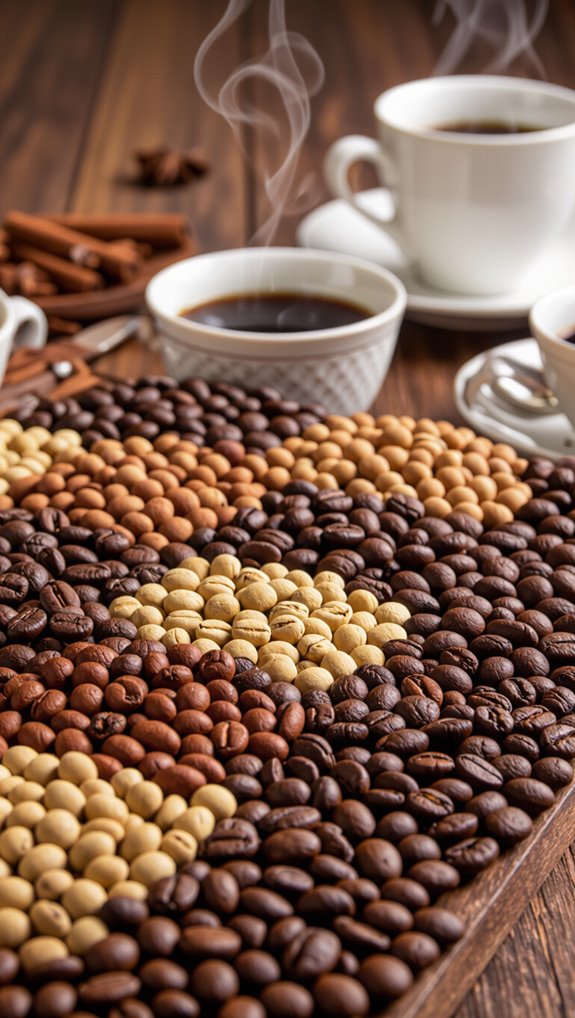
Coffee’s flavor journey begins in the soil, where geography becomes a master blender. Different regions impart unique characteristics to coffee beans through climate, altitude, and processing techniques.
Volcanic soils in Guatemala enhance sweetness, while high-altitude Costa Rican farms produce bright, complex flavors. Brazilian tropical climates yield full-bodied, nutty coffees perfect for espresso. Central American valleys create nuanced profiles with medium acidity.
Processing methods further define taste—wet processing in Central America highlights clean acidity, while natural processing in Ethiopia emphasizes fruity, wine-like notes. Each region tells a delicious story through its distinct coffee profile.
Best Coffee Blends for Espresso and Drip Brewing
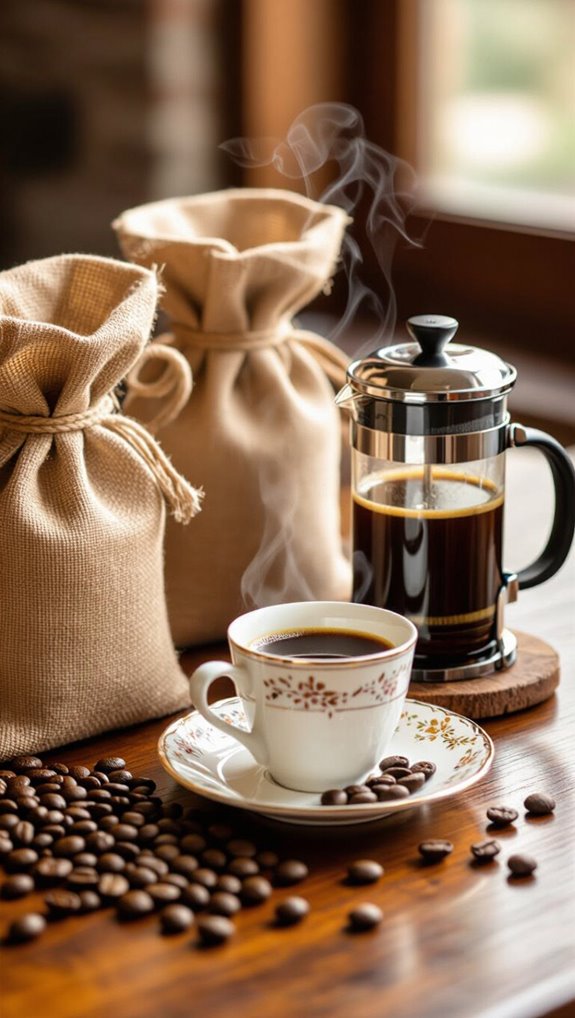
Dive into the world of coffee brewing, where the right blend can transform your morning ritual from ordinary to extraordinary. Choosing the perfect coffee blend depends on your brewing method and flavor preferences. Here’s what you need to know:
- Espresso lovers: Opt for dark roast blends with bold, chocolatey notes
- Milk-based drink fans: Select blends that complement creamy textures
- Drip brewing enthusiasts: Explore single-origin, lighter roasts with vibrant flavors
- Versatile drinkers: Look for medium roasts that work across brewing styles
Whether you’re a home barista or casual coffee lover, grasping blend characteristics will elevate your brewing game.
How to Choose the Right Blend for You

Choosing the perfect coffee blend starts with grasping your personal flavor preferences, from chocolatey and nutty to bright and fruity profiles.
Your ideal blend depends on matching the right roast level to your taste—whether you enjoy light and vibrant or deep and intense flavors—and selecting a brewing method that complements the bean’s unique characteristics.
Your Preferred Flavor Profile
When you’re on a quest to find your perfect coffee blend, grasping your personal flavor profile is the key to unlocking a truly satisfying coffee experience.
Your taste journey can be mapped through sensory exploration:
- Identify your preferred flavor dimensions (fruity, nutty, chocolatey)
- Consider your acidity tolerance
- Recognize your sweetness preferences
- Understand how brewing methods impact flavor extraction
Central and South American coffees offer balanced profiles that might suit beginners, while East African beans provide complex, bright experiences for adventurous palates.
Roast Level That Matches Your Taste
After exploring your flavor preferences, the next critical step in coffee selection is grasping how roast levels can dramatically transform your cup’s character. Each roast—light, medium, or dark—delivers a unique sensory experience.
Want bright, fruity notes? Light roasts preserve delicate origin flavors with crisp acidity. Craving a balanced profile? Medium roasts offer a harmonious blend of sweetness and body. Prefer bold, smoky intensity? Dark roasts deliver deep, caramelized richness perfect for espresso lovers. Your ideal roast depends on personal taste, brewing method, and flavor adventure you’re seeking.
Best Brewing Method for Each Blend
Let’s zero in on the perfect brewing method that’ll transform your favorite coffee blend into a sensory masterpiece. Different coffee blends shine through specific brewing techniques:
- French Press: Full-bodied dark roasts unleash deep, robust flavors
- Pour-Over: Light roasts reveal delicate, bright notes
- AeroPress: Medium roasts balance smoothness and complexity
- Cold Brew: Mellow, low-acid blends create silky smooth drinks
Matching your blend to the right brewing method isn’t just science—it’s an art. The grind, temperature, and extraction time dramatically impact your cup’s character. By grasping these nuances, you’ll elevate your home brewing from basic to barista-level sophistication, turning every morning into a delicious adventure.
How to Make Your Own Coffee Blend at Home
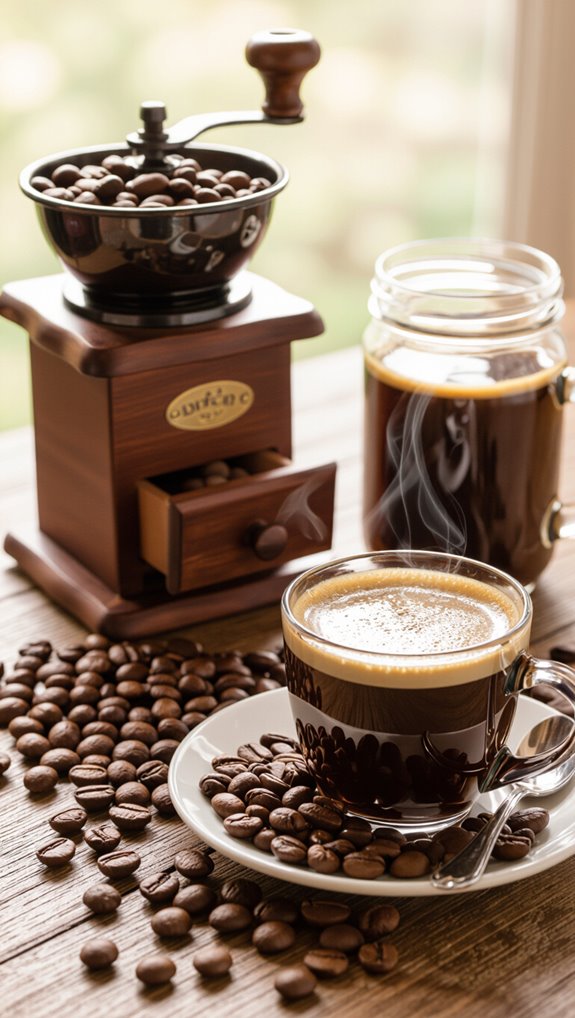
Creating your own coffee blend at home is easier than you might think, and it starts with selecting high-quality, single-origin beans that complement each other’s unique characteristics.
I’ll walk you through choosing the right ingredients, gathering the necessary equipment, and following step-by-step instructions to craft a personalized coffee blend that reflects your taste preferences.
From grasping bean origins to experimenting with roasting techniques, you’ll learn how to transform individual coffee beans into a harmonious, flavor-packed blend that rivals professional roasters.
Ingredients
When you’re ready to elevate your coffee experience, crafting your own custom blend at home opens up a world of flavor possibilities.
Beyond beans, you can transform your brew with creative ingredients:
- Natural spices like cinnamon and cardamom for warm, aromatic undertones
- Citrus peels to introduce bright, tangy notes
- Ground nuts for rich, nutty complexity
- Subtle extracts such as vanilla or almond for sophisticated depth
Equipment
Crafting the perfect coffee blend at home requires selecting the right equipment to transform your brewing experience.
A quality burr grinder like the Baratza Encore ensures consistent grind size, crucial for balanced flavor extraction.
Pair it with a precise gooseneck kettle to control water temperature and flow, maintaining the ideal 195-205°F range.
A digital scale with gram precision helps you measure grounds and water accurately, while brewing devices like V60 drippers or AeroPress offer versatility for experimenting with different blend profiles.
Don’t forget a water filtration system to enhance your coffee’s taste.
Instructions
After selecting the right coffee-making equipment, the next exciting step is creating your own personalized coffee blend at home.
Your coffee adventure begins with crafting a unique flavor profile that reflects your taste preferences. Here’s how to blend like a pro:
- Select 2-3 single-origin beans from different regions
- Experiment with roasting components separately
- Mix brewed coffee in various ratios to find your perfect balance
- Document each blend’s flavor characteristics
The key is patience and precision. Start small, taste thoughtfully, and don’t be afraid to adjust.
Your perfect blend is waiting to be discovered.
What Makes a Great Breakfast Blend Coffee
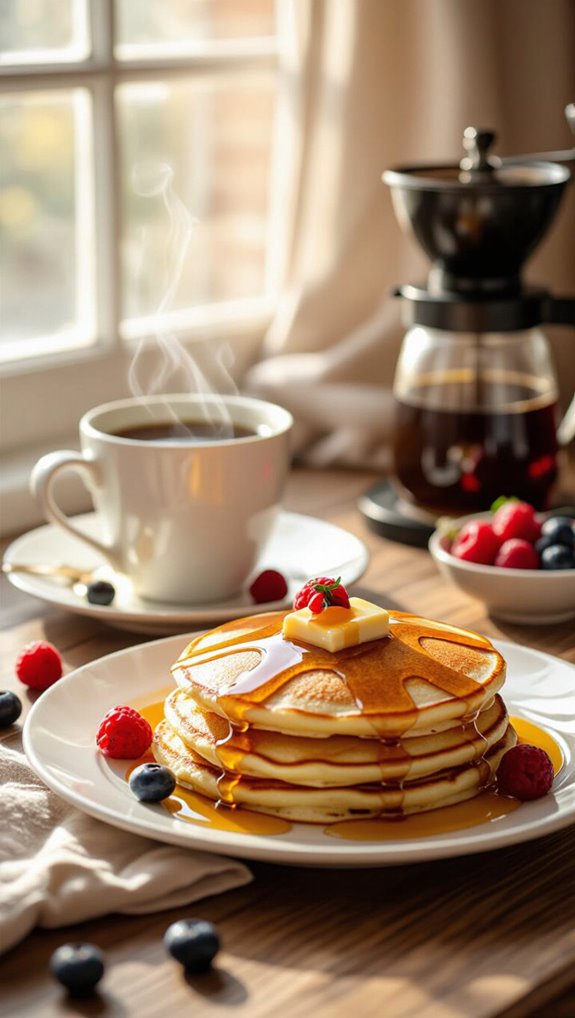
A great breakfast blend coffee stands out by striking the perfect balance between bright acidity, smooth flavor, and gentle morning stimulation.
I look for beans from high-altitude Central and South American farms, which deliver clean, sweet profiles with citrusy notes and caramel undertones.
The light-to-medium roast preserves natural bean complexity while ensuring a mellow taste that won’t overwhelm your morning meal.
Whether you’re enjoying eggs, toast, or pancakes, this carefully crafted blend provides just the right caffeine boost—energizing without being harsh, and flavorful without being aggressive.
Common Mistakes When Buying Coffee Blends

When selecting coffee blends, many enthusiasts unknowingly fall into common pitfalls that compromise their brewing experience. Avoid these critical mistakes when purchasing coffee:
- Buying low-quality, mass-produced blends with inconsistent flavor
- Choosing pre-ground coffee that quickly loses aromatic complexity
- Ignoring proper grind size for specific brewing methods
- Overlooking blend composition and origin details
The key is grasping that great coffee isn’t just about price—it’s about quality, freshness, and knowledge. By paying attention to bean origin, roast date, grinding technique, and storage methods, you’ll transform your morning cup from mediocre to magnificent.
Every detail matters in crafting the perfect brew.
Frequently Asked Questions
Can Coffee Blends Be Organic and Fair Trade?
Yes, coffee blends can definitely be both organic and Fair Trade certified. I’ll help you find blends that support sustainable farming and fair worker practices, ensuring you enjoy a delicious and ethically sourced cup of coffee.
How Long Do Coffee Blends Stay Fresh After Opening?
I’ll tell you straight: ground coffee stays fresh for 1-2 weeks after opening, with peak flavor in the first week. Whole beans last slightly longer, around 1-3 weeks. Store them in an airtight container away from heat and light for best results.
Are Expensive Coffee Blends Always Better Than Cheaper Ones?
No, expensive coffee blends aren’t always better. While they often use higher-quality beans and more complex processing, taste is subjective. I’d recommend trying different blends to find what you personally enjoy, regardless of price.
Can I Mix Different Coffee Blends at Home Myself?
Yes, I can mix different coffee blends at home! By roasting beans separately, experimenting with ratios, and carefully tasting combinations, I’ll create unique flavor profiles that match my personal preferences without complex equipment.
Do Coffee Blends Have More or Less Caffeine?
Coffee blends can have more or less caffeine depending on their bean composition. I’ve found that Robusta-heavy blends pack more punch, while Arabica-dominant ones are milder. Your blend choice directly impacts the caffeine kick you’ll experience.
In Conclusion
Mastering coffee blends is all about grasping flavor harmony and personal preference. I’ve shown you how to navigate the world of blends, from choosing the right combination to brewing techniques that elevate your coffee experience. Whether you’re a home barista or casual coffee lover, experimenting with different origins and ratios can transform your daily cup into something truly special.
Now that you understand how to choose the best coffee blends, the next step is ensuring you have the right equipment to bring out their full potential. A quality coffee machine can make all the difference in extracting the nuanced flavors from your carefully selected blends. Feel free to check out our coffee machine reviews to explore smart, well-reviewed options that match your brewing style and budget.
Trust your taste buds, start simple, and don’t be afraid to explore the delicious world of coffee blending. The perfect cup is waiting for you to discover it.

